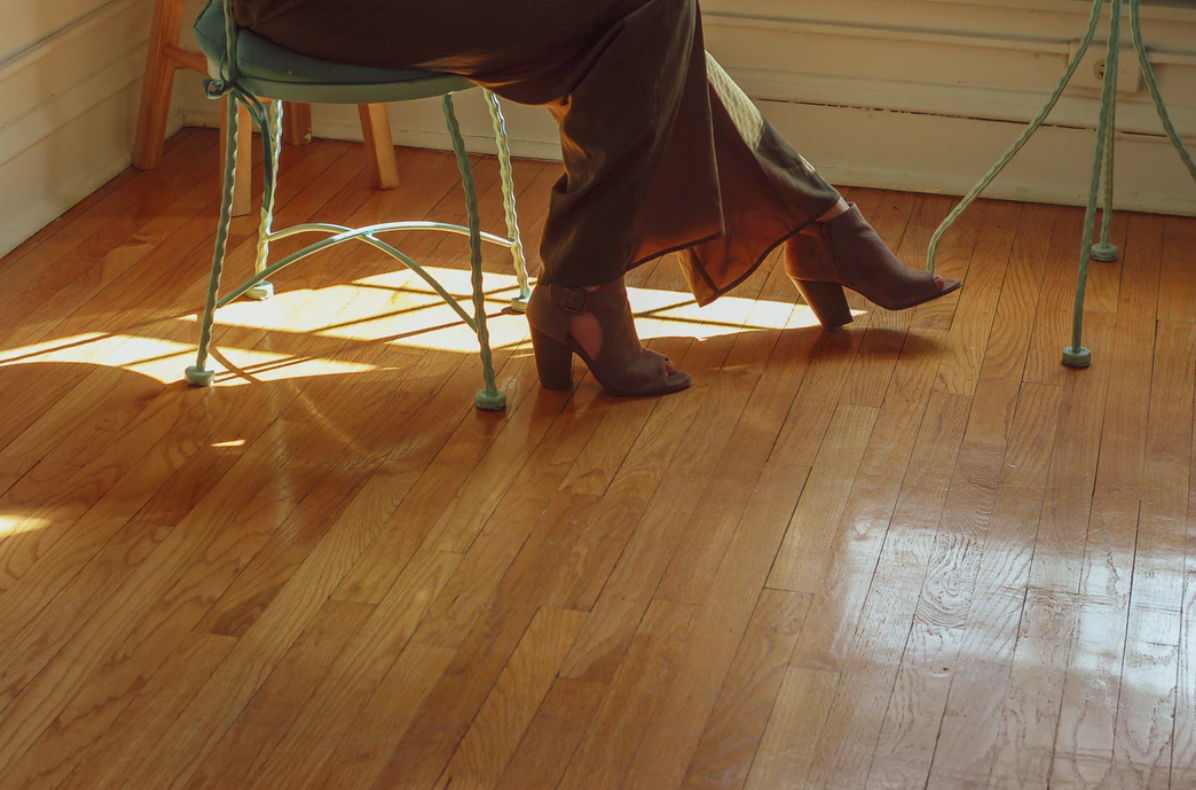How Durable Are Hardwood Floors?
August 25, 2021
How Durable Are Hardwood Floors?
There are many different types of hardwood flooring, and they all have different levels of general durability. Durability in what specific areas is another question, as there are many metrics to consider. Some are strongest against the everyday wear and tear of foot traffic, while others may scuff more easily but be more resistant against stains. How do you know what kind is best for your situation?
In this article, we will discuss the different types of hardwood flooring available, compare and contrast the durability differences between them, then wrap up with some advice on how to maximize the life of whatever flooring you choose.
Traditional Solid Wood

Source: Unsplash
When it comes to hardwood flooring, regular solid wood is likely going to be what comes to mind first. Real wood is going to be the most expensive, but have the best resale value when selling your home. Assuming the wood isn’t badly damaged in some unrepairable way, when it comes time to replace it, you will likely be able to get a good amount of money back for it. Speaking of repairs, it’s also the easiest to repair since it’s real wood all the way through.
Regarding its durability, it’s going to vary wildly between the countless species of wood you can buy. Luckily, the industry has a tool they use to eliminate confusion here. The Janka Hardness scale was specifically created for this reason. This scale tests the hardness of the wood by measuring how much force it takes to embed a .444 inch steel ball halfway through an average-sized plank of the variety in question. The higher the number, the stronger the wood. By using this scale, you can get a good idea of how tough the wood you’re buying is.
Note that you don’t necessarily want to just go out and buy whatever has the highest number, as maintenance activities like sanding will be much more difficult the higher the value gets. Pick something that’s a good middle ground between strength and repairability.
Laminate Wood

Source: Unsplash
Laminate wood flooring is the cheapest of the three and has the lowest durability. It has a look that resembles real hardwood floors, but it’s typically just a picture that’s been printed onto it. It’s created from high pressure, heat, and binding chemicals. The result of that is turned into very attractive floor coverings. There is a wear layer, image layer, and base layer. This means that in the event of damage, you won’t have any real method of repairing it that isn’t incredibly obvious to the human eye.
That said, it isn’t all downsides. When properly taken care of, it is very easy to clean due to it being completely flat, versus having a beveled edge. Laminate is typically sold in four-foot strips or even as tiles, meaning it can be much easier to transport and install than the 10+ foot lengths that real hardwood typically comes in. It also doesn’t actually need to look like wood. Anything can be printed onto it, so there are plenty of stylish designs that wouldn’t be available for real wood. If you’re looking to install your flooring by yourself, getting laminate wood may be the easiest option for you due it being designed to easily lock together with other planks.
Engineered Wood
Engineered wood rests in the middle when it comes to price. It’s usually cheaper than real wood, but it’s more expensive than laminate. It’s also more durable in some ways than real wood due to how it’s made. The exterior is made of layers of real wood that have been pressed together under intense hydraulic pressure with a veneer added afterward. This wear layer is designed such that it eliminates the problems that laminate flooring has with maintenance. It can be sanded down to remove scuffs, just like real hardwood can.
It also has good resale value thanks to it again having layers of real wood on the outside. While laminate isn’t really meant to be reused, engineered wood will usually have plenty of life left in it after being taken out of a building.
Engineered wood usually comes prefinished, with a durable coating put on right at the factory. This means that you typically won’t need to spend time and money doing it yourself and hiring somebody to apply it for you.
One particularly great thing about engineered wood that makes it stand out is that it can be used in any moisture environment. Regular hardwood flooring and laminate flooring are susceptible to moisture penetration, eventually causing the floor to twist, bulge and swell. For this reason, they may not be a good choice for your kitchen if your dishwasher has a tendency to leak. When this happens, you may have to replace the flooring entirely. Not having to worry about that is just another great way it saves you money down the line.
Finish Is Important
If you want to maximize the durability of whatever floor you choose, you will want to put a good quality finish on it. There are some common mistakes that homeowners make when cleaning their floors which are also important to know about. There are many different types of finish to choose from and it can be overwhelming if you don’t know what you’re looking for. It helps to establish a clear set of guidelines for what you’re looking for. Let’s briefly go over some potential scenarios to help get the ball rolling for you.
What kind of traffic do you expect to be going through the area on a regular basis? If you expect the floor to be in constant use, you may want to consider an oil-based polyurethane. It offers middle-of-the-road protection for an affordable price.
If this is a home, do you have animals and/or children and expect lots of spills? A water-based polyurethane may be best due to its high moisture resistance.
Do you really just never want to see scratches ever again? Aluminum oxide offers far and away the strongest protection and lasts for decades before needing any kind of maintenance, but comes with the cost of being the most difficult to reapply. It’s also somewhat infamous for making the floor so strong that it may not even be possible to properly sand it when you need to.
Is this a historic location or do you just want to have a more retro look? Penetrating oil sealer is what homes used for ages before newer finishes were invented. It takes a very long time to dry, and requires touching up every few years, but you wouldn’t be considering it for sheer practicality in the first place.
Conclusion
By now, you should have a good understanding of the different flooring options. The history of hardwood flooring is actually very interesting. Each option has its own unique pros and cons that make them best for different situations. In the end, all flooring needs maintenance, but knowing the timeframe for these things will save you hundreds or even thousands of dollars, something that is definitely worth the investment. If you still have questions, our experts are here to help – just give us a call or fill out a contact form. here.






